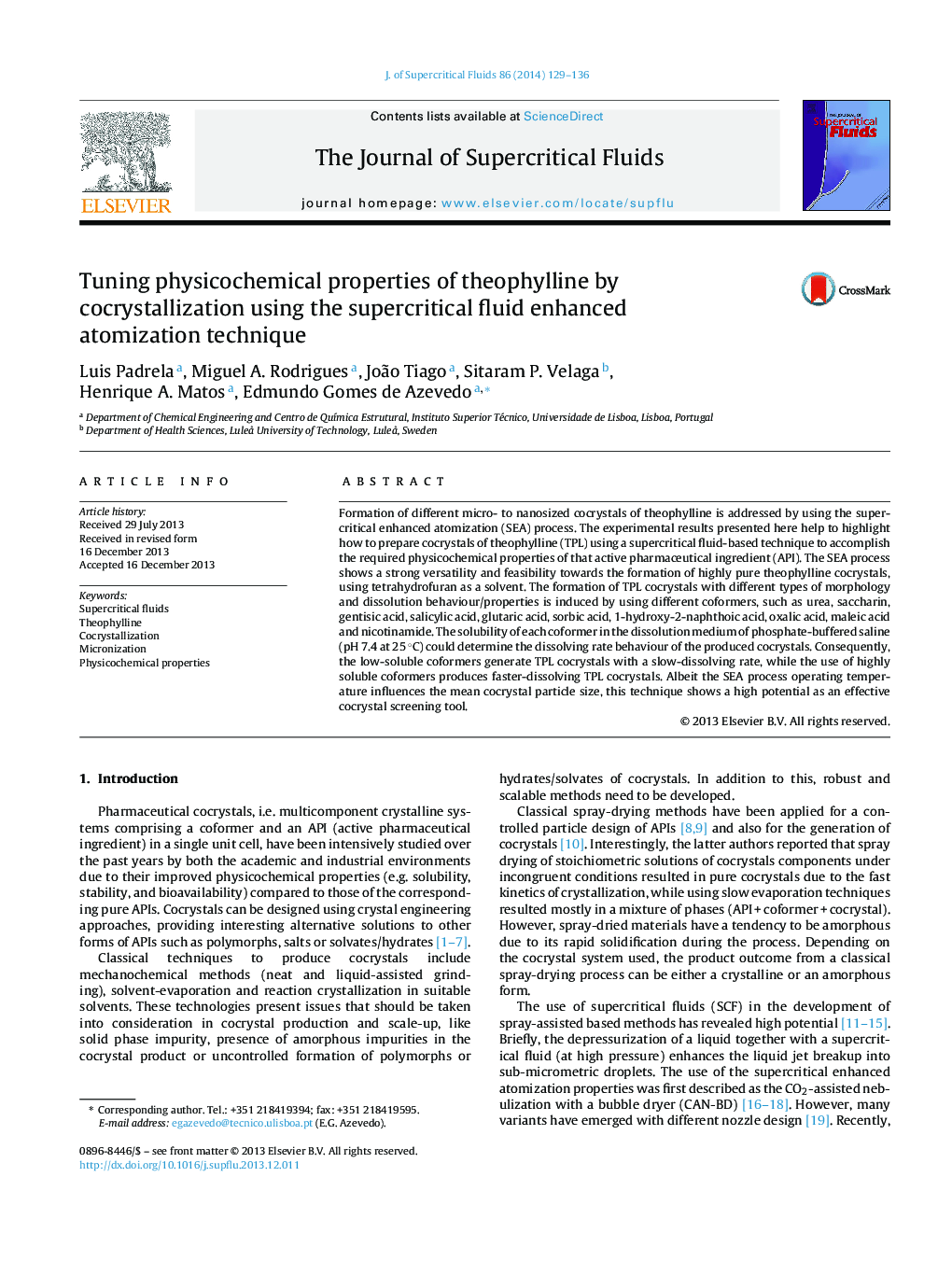| Article ID | Journal | Published Year | Pages | File Type |
|---|---|---|---|---|
| 230560 | The Journal of Supercritical Fluids | 2014 | 8 Pages |
•Theophylline is cocrystallized with different coformers by using the supercritical enhanced atomization process.•The use of different coformers generates particles with different types of morphology and dissolution properties.•Temperature influences the cocrystal's particle size distributions.•The supercritical enhanced atomization process is an efficient, simple and robust process for the preparation of cocrystals.
Formation of different micro- to nanosized cocrystals of theophylline is addressed by using the supercritical enhanced atomization (SEA) process. The experimental results presented here help to highlight how to prepare cocrystals of theophylline (TPL) using a supercritical fluid-based technique to accomplish the required physicochemical properties of that active pharmaceutical ingredient (API). The SEA process shows a strong versatility and feasibility towards the formation of highly pure theophylline cocrystals, using tetrahydrofuran as a solvent. The formation of TPL cocrystals with different types of morphology and dissolution behaviour/properties is induced by using different coformers, such as urea, saccharin, gentisic acid, salicylic acid, glutaric acid, sorbic acid, 1-hydroxy-2-naphthoic acid, oxalic acid, maleic acid and nicotinamide. The solubility of each coformer in the dissolution medium of phosphate-buffered saline (pH 7.4 at 25 °C) could determine the dissolving rate behaviour of the produced cocrystals. Consequently, the low-soluble coformers generate TPL cocrystals with a slow-dissolving rate, while the use of highly soluble coformers produces faster-dissolving TPL cocrystals. Albeit the SEA process operating temperature influences the mean cocrystal particle size, this technique shows a high potential as an effective cocrystal screening tool.
Graphical abstractFigure optionsDownload full-size imageDownload as PowerPoint slide
